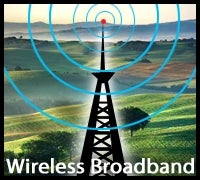 |
A new report by the Federal Communications Commission is challenging opposition to a plan that lays the groundwork for free, nationwide wireless broadband.
As with a number of soon-to-be-vacant portions of wireless spectrum, the spectrum — also known as Advanced Wireless Service (AWS) in the 2155-2175 MHz band, or AWS-3 — has become a battleground. On one side are Internet giants and rural broadband advocates, who are facing off with broadcasters and wireless carriers over AWS-3’s use. Previously, opponents to opening up the technology to unlicensed devices have cited concerns that it will interfere with their networks and existing devices.
However, the FCC on Friday released results from its laboratory tests that found little evidence supporting concerns that AWS-3 interfered with wireless devices operating in an adjacent frequency.
As a result, the report (available here in PDF format) furthers efforts by a number of organizations who are pushing for AWS-3 to be opened. That, supporters say, could pave the way for advanced, wireless broadband technologies and potentially, greater access to the Internet from rural communities. FCC Chairman Kevin Martin, a supporter of the concept, circulated a proposal on opening AWS-3 among the commission earlier this year.
Friday’s FCC’s report also marks a blow to the efforts of broadcasters and wireless network operators, who have been lobbying steadily against such a move. Mobile carrier T-Mobile, for instance, had submitted its own test results that indicated harmful mobile-to-mobile interference is likely to occur under the proposed rules.
The commission’s report did have at least one wrinkle. The FCC said that out-of-band emissions (OOBE) produced in the testing were limited as a result of stricter standards than it normally places on licensees, who it typically expects to work with each other and industry groups to minimize interference. However, the report also called its findings “an upper bound on interference,” and suggested that real-world interference might be even less of an issue.
“The statistical nature of calling patterns, frequency selection, transmitter and receiver location, and signal levels only serves to improve the predicted performance and results in fewer instances of interference than would be predicted by this static case,” the FCC’s Office of Engineering and Technology wrote in the report.
The news marks the latest victory for companies and organizations that have been pushing for the FCC to open areas of spectrum that would expand broadband connectivity options for rural communities and to create new opportunities for advanced mobile devices and services.
Google, for instance, has taken a leadership role in pressing lawmakers to enact sweeping changes that would create more openness in wireless, national broadband networks, with one goal being expanded broadband connectivity options for rural communities.
The search giant bid billions during the FCC’s auction of 700MHz wireless spectrum, a portion of airwaves freed up by broadcasters’ impending shift to all-digital signal. While Verizon
Wireless ultimately walked away with the largest chunk of spectrum — and Google (NASDAQ: GOOG), with none — the company’s participation in bidding forced the auction’s open-access rules to kick in, forcing the winner to make the spectrum it had won open to all devices and services.
It later claimed that although it didn’t win any of the spectrum itself, its primary goal had been to ensure open-access
requirements were put in place despite opposition from the wireless industry, and that those requirements were activated during bidding.
More recently, Google co-founder Larry Page appeared before the FCC to urge the commission issue an order freeing up white spaces, another portion of wireless spectrum that he dubbed “Wi-Fi on steroids.”
White spaces, which is being vacated by TV broadcasters’ shift to digital transmissions, is seen as highly valuable to Internet companies because of its unique properties: It’s able to reach long distances, penetrate thick walls and circumvent obstacles like mountain ridges or dense foliage, which can block broadband access in rural areas.
Update clarifies differences between AWS-3 and other unlicensed spectrum proposals.


